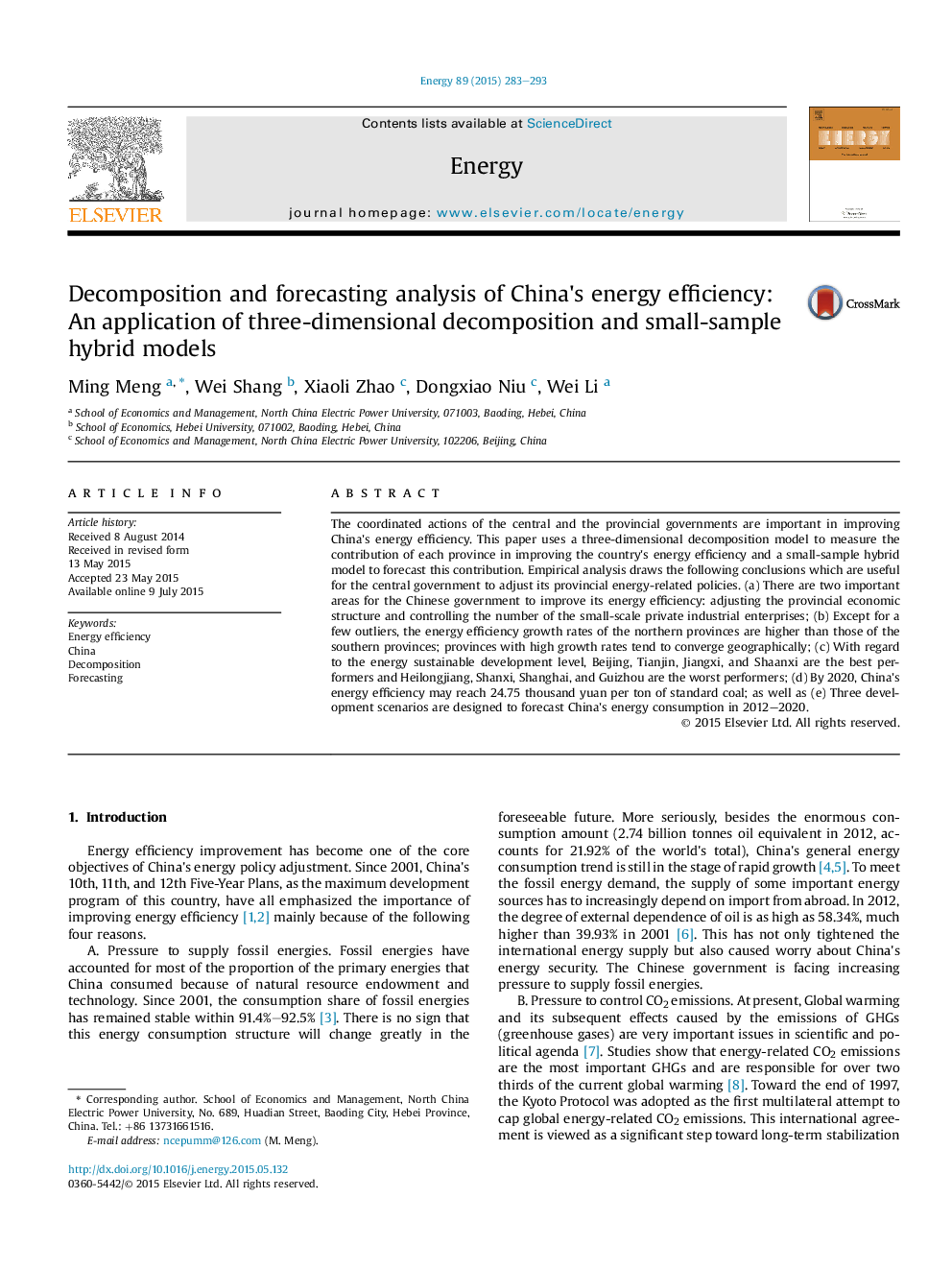| Article ID | Journal | Published Year | Pages | File Type |
|---|---|---|---|---|
| 1731906 | Energy | 2015 | 11 Pages |
Abstract
The coordinated actions of the central and the provincial governments are important in improving China's energy efficiency. This paper uses a three-dimensional decomposition model to measure the contribution of each province in improving the country's energy efficiency and a small-sample hybrid model to forecast this contribution. Empirical analysis draws the following conclusions which are useful for the central government to adjust its provincial energy-related policies. (a) There are two important areas for the Chinese government to improve its energy efficiency: adjusting the provincial economic structure and controlling the number of the small-scale private industrial enterprises; (b) Except for a few outliers, the energy efficiency growth rates of the northern provinces are higher than those of the southern provinces; provinces with high growth rates tend to converge geographically; (c) With regard to the energy sustainable development level, Beijing, Tianjin, Jiangxi, and Shaanxi are the best performers and Heilongjiang, Shanxi, Shanghai, and Guizhou are the worst performers; (d) By 2020, China's energy efficiency may reach 24.75 thousand yuan per ton of standard coal; as well as (e) Three development scenarios are designed to forecast China's energy consumption in 2012-2020.
Related Topics
Physical Sciences and Engineering
Energy
Energy (General)
Authors
Ming Meng, Wei Shang, Xiaoli Zhao, Dongxiao Niu, Wei Li,
